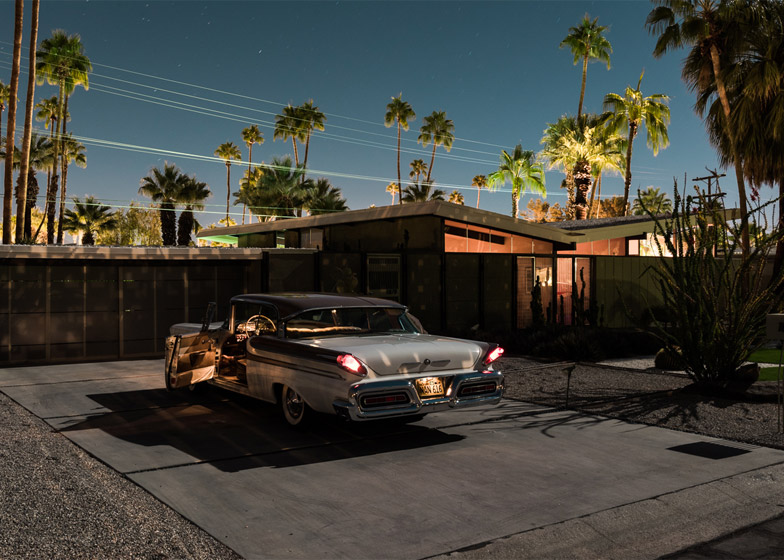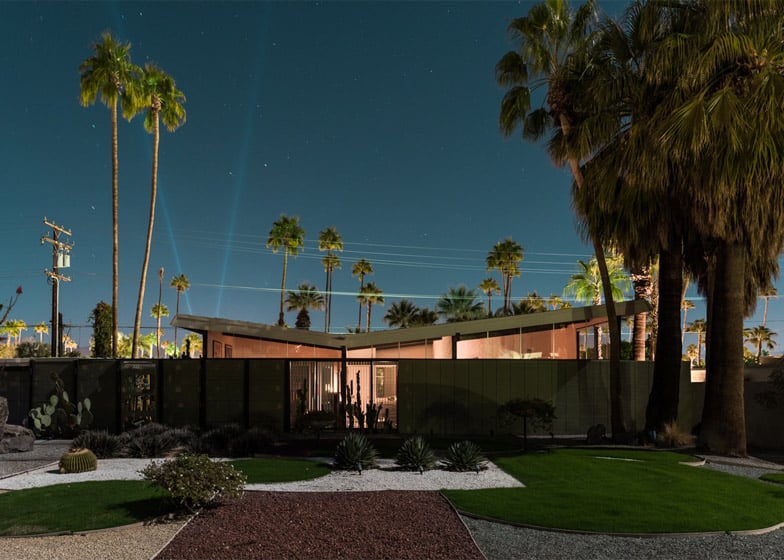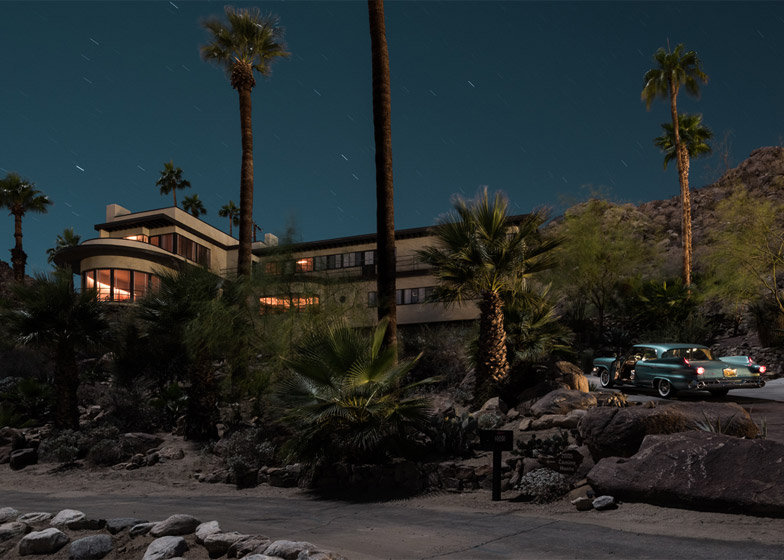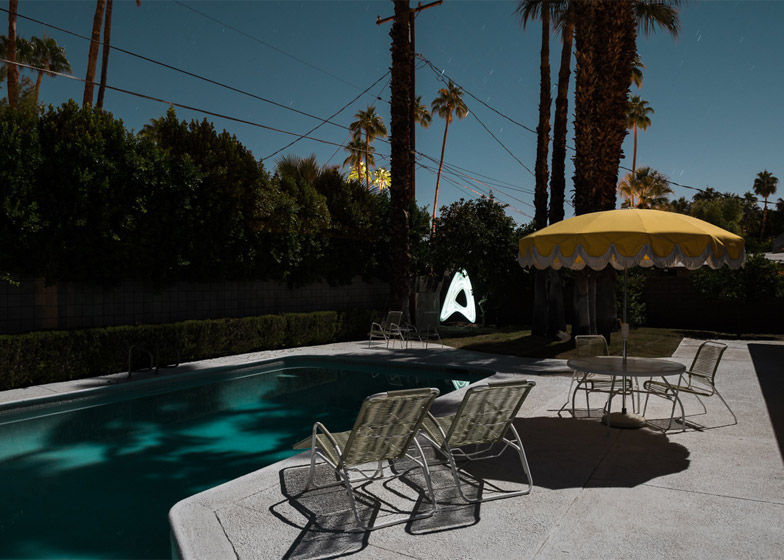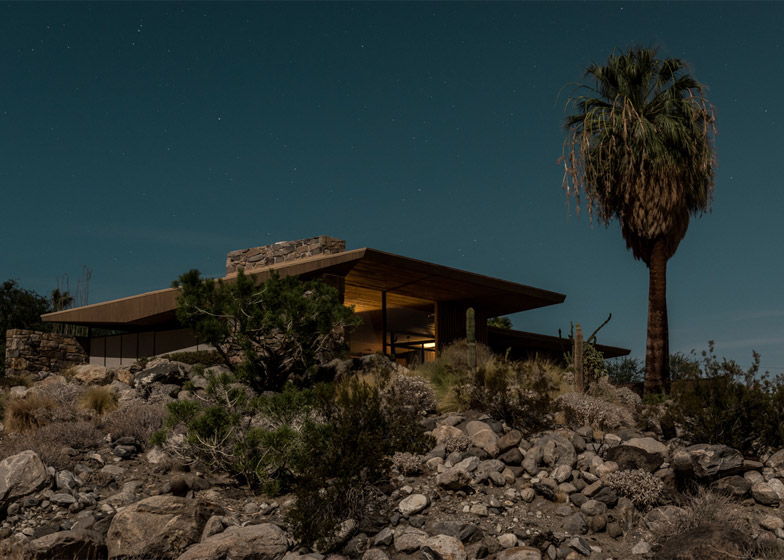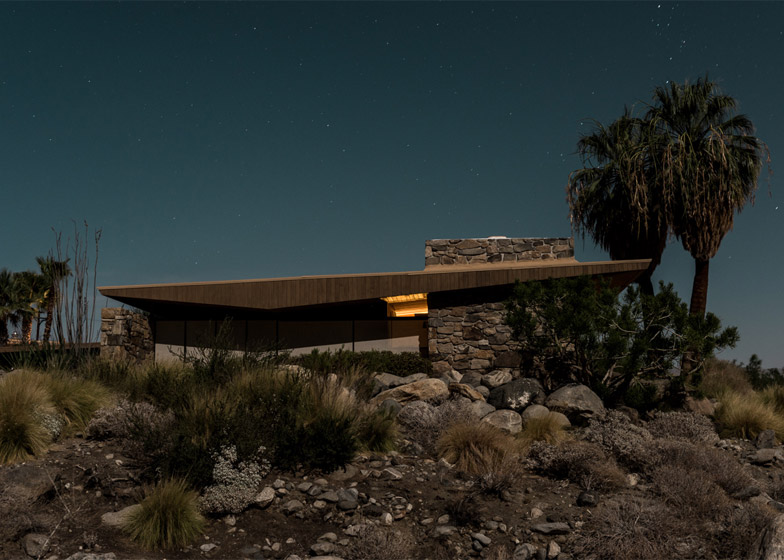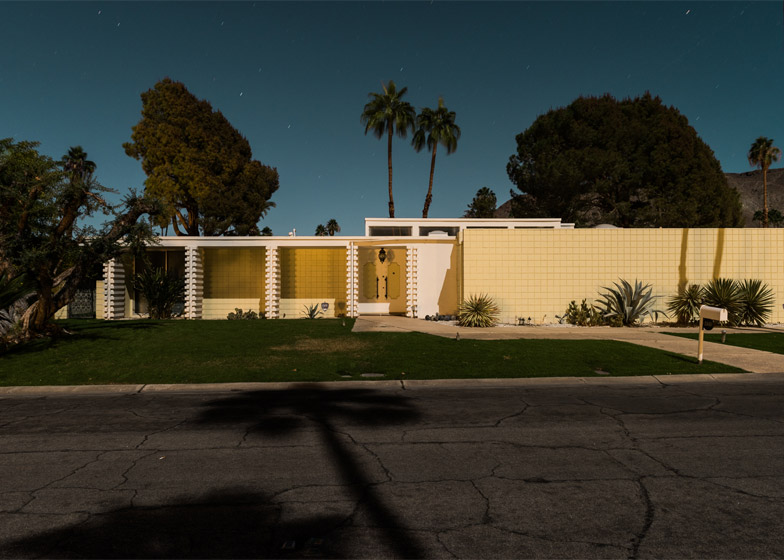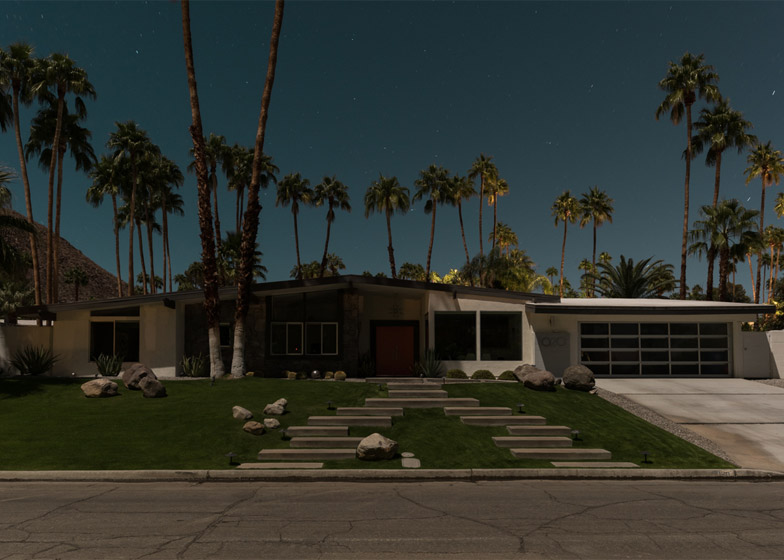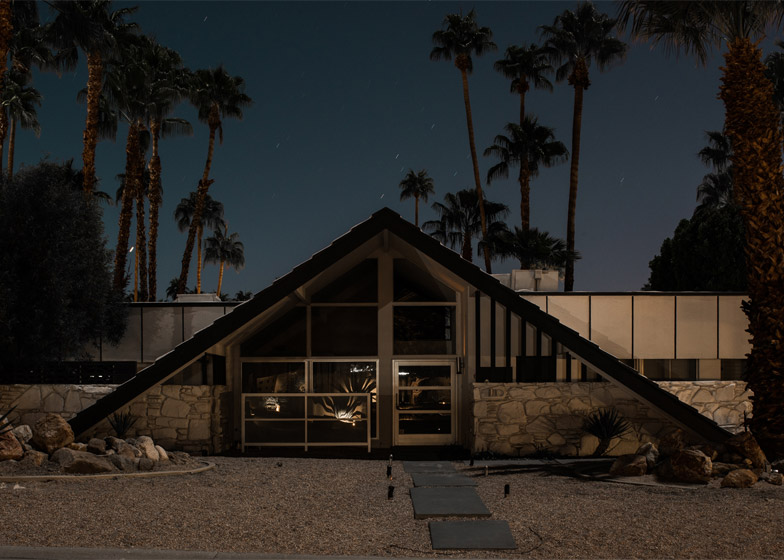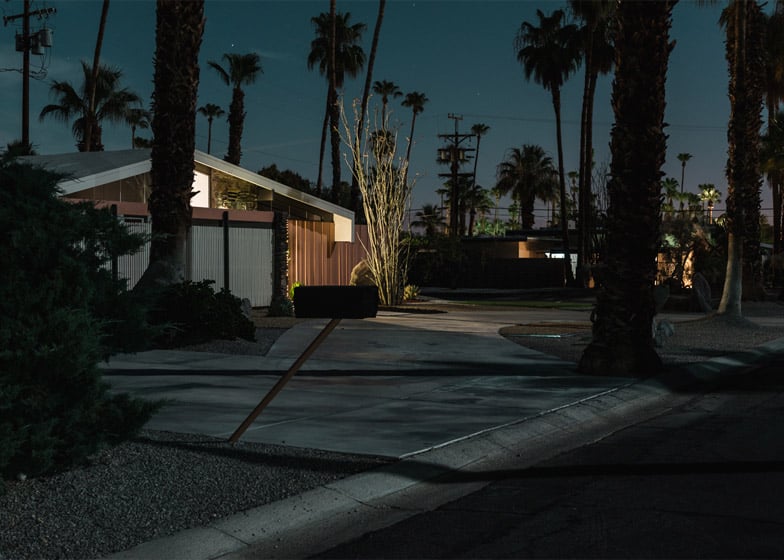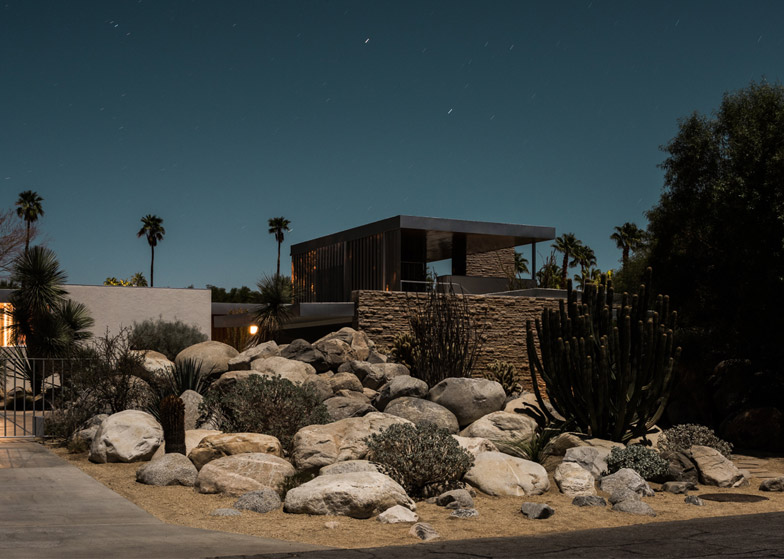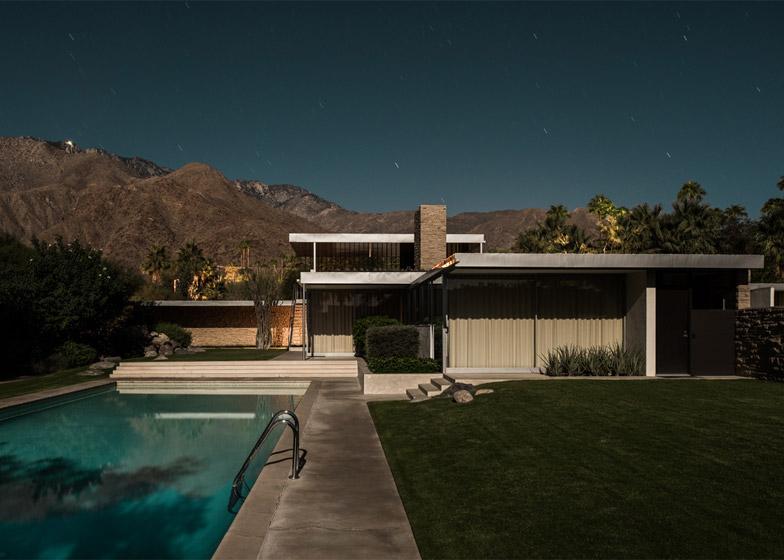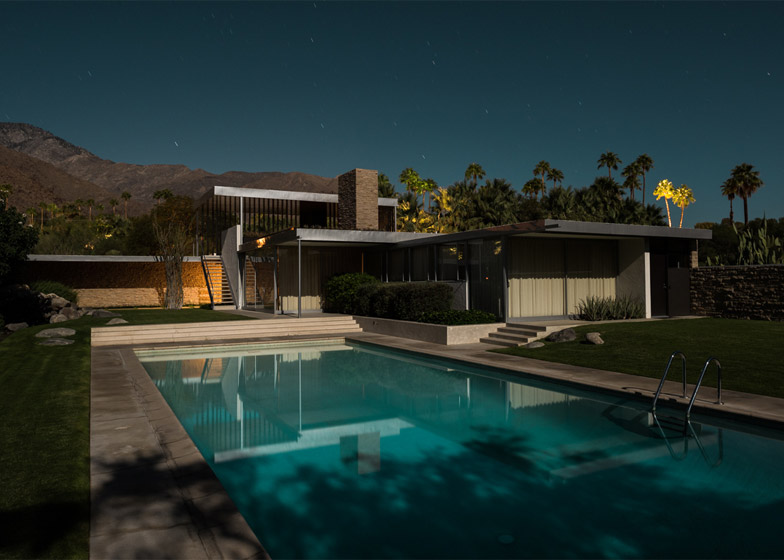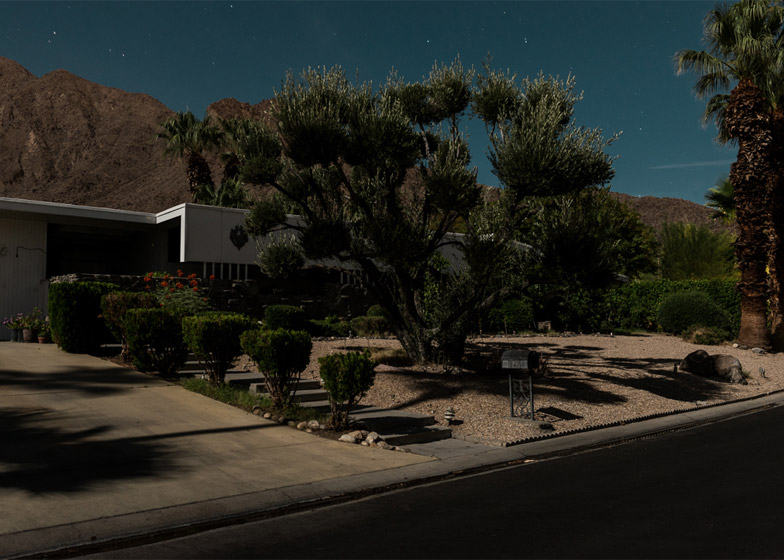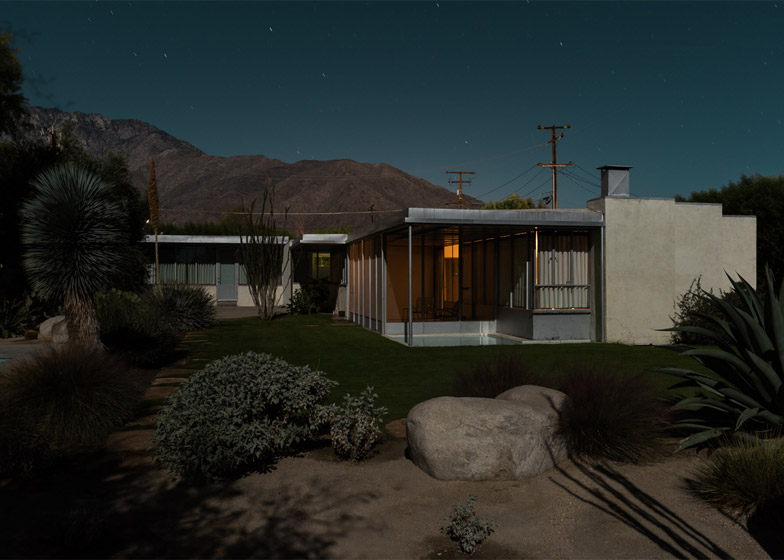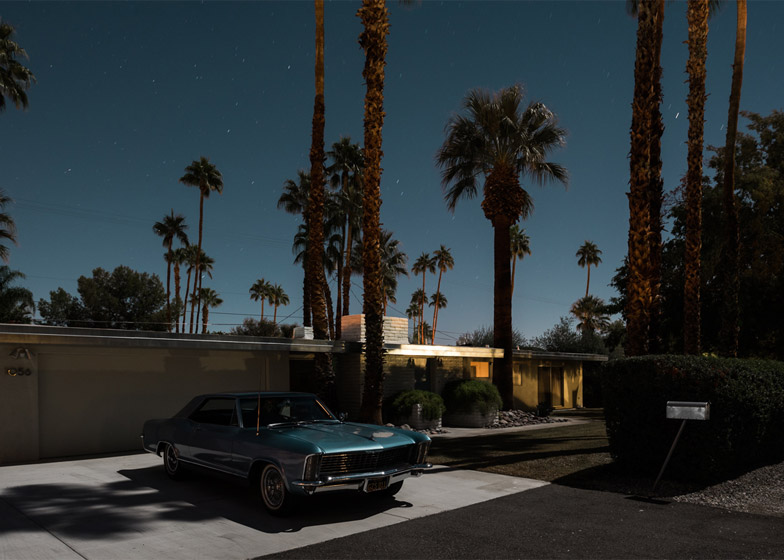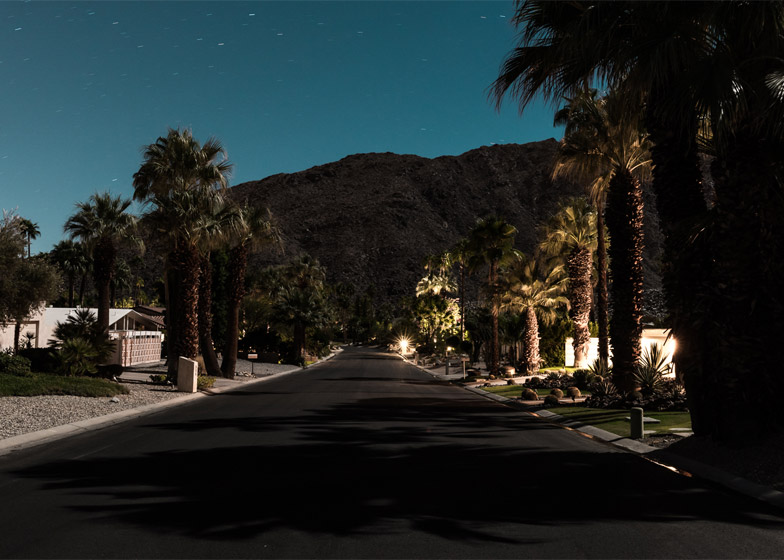Photo essay: Australian photographer Tom Blachford ventured out after dark to create photographs of California's Modernist houses that look like they could have been taken 70 years ago (+ slideshow).
Blachford's long-exposure Midnight Modern shots depict mid-20th-century houses in Palm Springs – including the Menrad Residence by William Krisel and Richard Neutra's Kaufmann House – after their residents have gone to bed.
He selected houses with no obvious modern additions to create images that look like they could have been taken when the buildings were still new.
"Palm Springs has been seen in a huge amount of imagery, but almost always during the bright sunshine," said the photographer. "My hope for the series was to create a cinematic aesthetic for the homes to be viewed not just as buildings, but structures that have been the sets for countless scenes and stories."
The series came about almost by accident. My girlfriend and I were visiting Palm Springs after a trip to Cuba and Mexico in 2013. We knew that it would be beautiful to see the houses and the mountains, but were not prepared for just how amazing it is.
We downloaded the Palm Springs Modern Committee (PS-MODCOM) app that allows you to take self-guided tours of the homes and tried to see as much of the town as we could by day.
In the evening, after a dinner, I decided to try to take some night shots to see if I could get a different look to some of my photos. It's kind of paralysing photographing a place like that, similar to the Taj Mahal or the Brooklyn Bridge. It feels like every possible angle and variation on a photo has already been taken.
It ended up being a full moon and after taking the first image I was absolutely blown away. The house glowed against the pure blue sky and the mountains looked like a painted backdrop.
We shot a few more images that night but it was late so we went to bed. I came back home to Australia and the images kind of haunted me, they were so beautiful. I was blown away by the graphic simplicity and clean lines of the homes.
I'm 27 years old. Open-plan areas for entertaining and a focus on living and enjoyment are things I grew up with – but I was struck by how revolutionary it must have been when these houses were built.
I knew I didn't have enough for a series, so we planned ahead and found there would be a supermoon [when a full moon coincides with the closest orbit path to Earth] in July 2014, and worked our next trip around being there for that.
On the first two trips the houses kind of selected themselves. I had no access initially, so could only shoot homes that had no fences or obstructions. Thankfully this is common in Palm Springs, where entire suburbs are completely open.
Next I had to make sure there were no lights on inside the houses or in surrounding houses. With exposures this long even the smallest bulb on inside would have caused huge flare and ruined the shot.
We would cruise around in the dark with headlights off looking for dark patches on the street or a home with no lights on. I would sit in front for a minute or so and let my eyes adjust and make a call on whether I thought it was interesting or not. For me it came down to not only the house but the landscaping and the whole environment surrounding it.
Some of my favourite images in the series are of homes where no one can even identify the architect and that you perhaps wouldn't glance at twice during the day. The moonlight, shadows and the lighting in the environment sometimes work together to create something spectacular out of nothing.
Conversely some houses that I expected to be amazing and I would work hard to line up during my days failed spectacularly under the scrutiny of the moonlight. Sometimes just a single neighbour with a big outdoor light could ruin it.
After exhibiting the first part of the series in 2014 the response was amazing. I finally reached out to the Palm Springs community and Chris Menrad – the president of the PS-MODCOM and the owner of one of the houses I had shot covertly. He invited me to return to shoot more, this time with access to the homes and his amazing collection of cars.
He has around nine vintage cars, all rare and in perfect condition. Each night we would grab a new car and think of how we could place it in a shot. I loved the motif of an open door raising so many questions. Are they coming or going? Who was driving? Where have they been?
I tried to avoid any signs that gave away the fact that the images were shot in the 21st century. If a house had a new car sitting in the driveway or a large flashy air conditioner I would avoid it. The homes sit there timelessly and I wanted the images to reflect that.
If a house didn't seem to suit the series I would simply move on and try and find another. The beauty of Palm Springs is there is such a high concentration of amazing homes so there is usually something worth shooting no more than a block away.
In the new series, shot in November 2014, I did have access to some homes so when you see internal lights on that is a result of using the lowest dimmer setting to create some glow.
The difficulties in shooting were mostly around working in the dark, and often trying not to wake anyone up. The biggest issue was getting the camera to lock focus. With very little contrast to work with, the camera would hunt back and forth failing to lock onto anything.
For the first two trips my strategy would be to quietly step up to the door and hold my iPhone to my face for a light source which my assistant would focus on. On my third trip I purchased the largest laser sight I could find from a local gun store.
It was a beastly green laser designed for Military M-16 rifles. I would shine it briefly on the house and like magic the camera would lock straight on. At the end of the week I returned it and told them I forgot I didn't own a gun. I got a full refund.
Palm Springs has been seen in a huge amount of imagery, but almost always during the bright sunshine. My hope for the series was to create a cinematic aesthetic for the homes to be viewed not just as buildings, but structures that have been the sets for countless scenes and stories.
I love that the shots look at first glance as if they might have been taken during the day and had a huge amount of post-production work. When people examine them closer they see the subtle hints of nightfall, the trailing stars and lights on trees give away the truth.
The moonlight has an incredible effect but it's often too dim for our eyes and brains to process. The camera is able to drink in the light in a way that we can't and render it for us to fully appreciate.
I add a little contrast, sharpening and clarity to boost the detail in the shadows. The final step is to tweak the blues towards a dusty teal. They tend to come out of camera quite purple, which I don’t like.
Recently I returned for my fourth trip to exhibit the images and was able to meet many of the homeowners whose houses I had shot. What started for me as a project standing in the dark shooting these unknown houses has become deeply personal. I kind of feel like I have a second home in the desert now.

